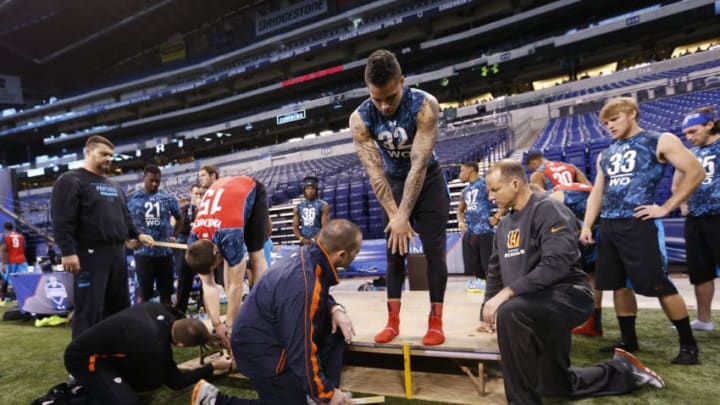Is the idea of the Dallas Cowboys drafting the best player available when their number is called more important than addressing team need?
When it comes to selecting players in the NFL Draft, there are many schools of thought. The most talked about philosophy is drafting for talent early as opposed to drafting for need, which is often reserved for the later rounds. Most teams, including the Dallas Cowboys, seem to loosely follow that ideology.
But there is always an argument to be had concerning every single draft selection. Should you take the best player available or draft a player who fills a team need? Sometimes, a prospect can check both boxes for you. But often, every pick is a sacrifice in one of those areas. Either he’s the most talented player on your board regardless of position or he’s the most talented player available at a position of need on your team.
For instance, let’s say the best player available for the Cowboys, according to their big board, is Oklahoma quarterback Baker Mayfield when Dallas picks 19th overall in the first round. Should the Cowboys draft him? The obvious answer is no.
Dallas already has Dak Prescott under center. But if you are strictly adherent to the “best player available” rule, you select Mayfield and believe it will work itself out. Who knows? Mayfield could overtake Prescott as the starter midseason and the Cowboys could trade Dak for a high selection in the 2019 NFL draft. Again, this is highly improbable and a bit ridiculous to even consider. But it also highlights the flawed logic behind the idea of best player available.
In turn, drafting solely for team need also has it’s drawbacks. Again, we look at the Cowboys for an example. In the 2013 NFL Draft, the Cowboys traded their first round selection (18th overall) to the San Francisco 49ers, dropping 14 spots. Dallas used that pick (31st overall) to land Wisconsin center Travis Frederick. But many believed the Cowboys overreached for Frederick by at least two rounds!
Ultimately, the Cowboys picked the right player for them and a Pro Bowler to boot. But by drafting to fill a need, Dallas overlooked other talented players they could have possibly added to the roster along with Frederick. Players like running back Le’Veon Bell, cornerback Darius Slay, safety Tyrann Mathieu and defensive tackle Kawann Short.
Next: Ranking every top-10 pick in Dallas Cowboys’ history
The point here is drafting the best player available doesn’t work in every situation. And drafting purely for team need doesn’t work either. It’s a combination of the two plus countless hours of scouting and research that goes into making the right decision for your team when their number is called. And a majority of the time, it doesn’t work out the way we all hoped it would anyway.
